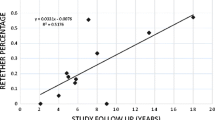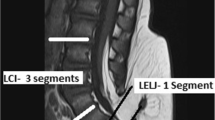Abstract
Object. The authors tried to reveal some unique features of lipomeningomyelocele (LMMC), including clinical presentation, factors precipitating onset of symptoms, pathologic entities of LMMC associated with tethered cord syndrome, and surgical outcome in LMMC patients.
Methods and results. Seventy-five patients with LMMC were enrolled in this study. Neuro-imaging and intraoperative findings allowed classification of LMMC into three types: type I, type II, and type III. The patients were divided into two groups by age: A (51 patients), from birth to 3 years, and B (24 patients), from 3 to 24 years. For prevention of retethering of the cord, a mega-dural sac rebuilding procedure was performed in 15 patients. During a mean postoperative follow-up period of 4 years, the surgical outcome was satisfactory in terms of improved pain and motor weakness, but disappointing with reference to the resolution of bowel and bladder dysfunction. Among these 75 patients with LMMC, preoperative deficits were improved after surgery in 29 (39%), remained stable in 28 (37%), changed slightly in 13(17%), and worsened in 5 (7%). Patients in group A achieved better outcomes than those in group B. Depending on the type of lesion, patients with types I and II LMMC have better outcomes than those with type III LMMC. Finally, retethering of the cord with neurological deterioration occurred in 4 (5.3%) of the 75 patients, but no retethering was found in the 15 patients who were recently treated with a mega-dural sac rebuilding procedure.
Conclusion. Our data continue to support the opinion that early diagnosis and optimal surgery are still essential for the treatment of patients with LMMC, since there is a high likelihood of residual neurological functions that can be preserved. Based on our surgical experience of untethering and decompression of lipomas, a mega-dural sac repair is useful to prevent retethering of the cord.
Similar content being viewed by others
Author information
Authors and Affiliations
Additional information
Electronic Publication
Rights and permissions
About this article
Cite this article
Kang, JK., Lee, KS., Jeun, SS. et al. Role of surgery for maintaining urological function and prevention of retethering in the treatment of lipomeningomyelocele: experience recorded in 75 lipomeningomyelocele patients. Childs Nerv Syst 19, 23–29 (2003). https://doi.org/10.1007/s00381-002-0674-0
Received:
Revised:
Issue Date:
DOI: https://doi.org/10.1007/s00381-002-0674-0




